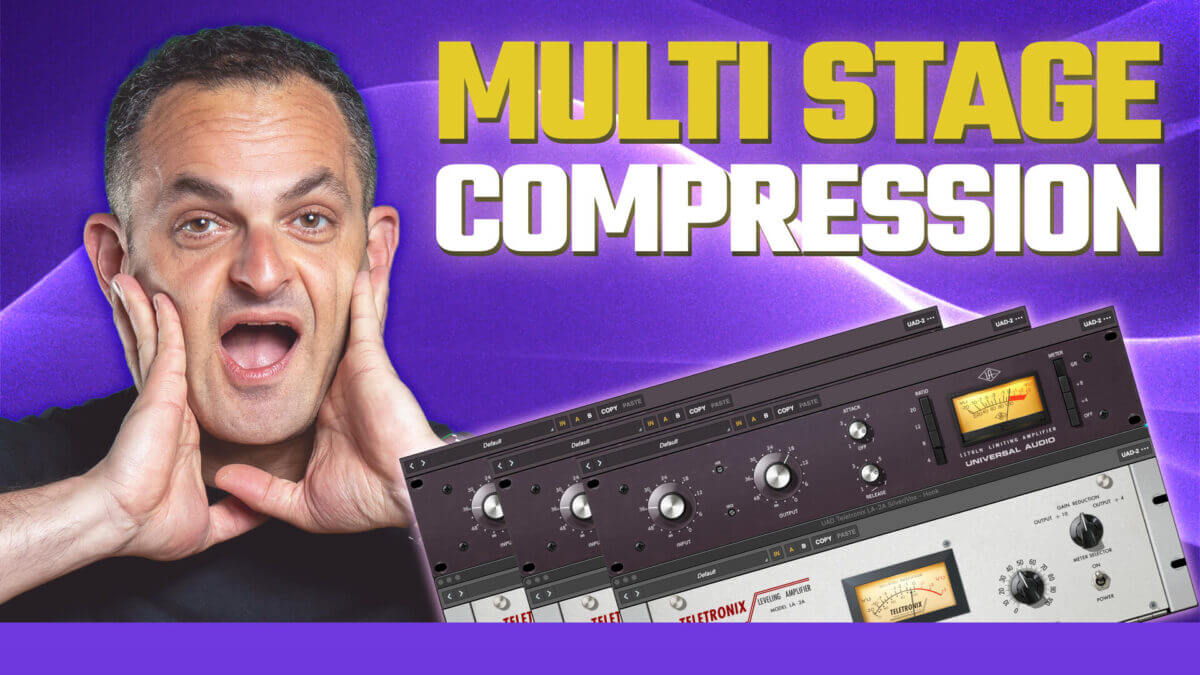
Using Multiple Compressors in Series: Advanced Techniques for Enhanced Control
In today’s post, we’re diving into the technique of using multiple compressors in series during music production. This approach can provide a level of control and shaping of your waveform that a single compressor simply can’t achieve. By understanding and utilizing multiple stages of compression, you can bring out the best in your mixes, adding depth, punch, and clarity to your sound.
Compression is a fundamental tool in music production, used to control the dynamics of a track and ensure that all elements sit well together in the mix. However, sometimes a single compressor isn’t enough to achieve the desired effect. This is where using multiple compressors in series comes into play, offering a range of benefits that can take your mixing to the next level.
Why Use Multiple Compressors?
Using multiple compressors allows you to address different aspects of your audio signal at various stages. For instance, you might use one compressor to tame peaks and another to add sustain or color. This technique provides a more nuanced control over the dynamics, enabling you to shape the sound in ways that a single compressor cannot.
The Benefits of Multiple Compression Stages
Increased Control Over Dynamics: Using two or more compressors in series allows you to manage different dynamic aspects of your signal separately. One compressor can handle the initial peaks, while another can smooth out the overall level, resulting in a more controlled and polished sound.
Enhanced Shaping and Coloring: Different compressors have unique characteristics. By combining them, you can exploit these differences to add color and texture to your track. For instance, you might use a transparent compressor for initial gain reduction and a colored compressor to add warmth and character.
Smoother Compression: Multiple stages of light compression can achieve a more natural and less noticeable effect than a single compressor applying heavy compression. This approach helps in maintaining the musicality and dynamic integrity of the track.
Practical Applications
Vocals: Start with a fast compressor to catch quick transients and then use a slower, more musical compressor to smooth out the overall performance. This can result in a vocal that is both punchy and controlled.
Drums: Use one compressor to add punch and another to glue the drum elements together. This technique can help in achieving a powerful and cohesive drum sound.
Bass: Apply a compressor with a slow attack to enhance the attack of the bass and then follow it with a compressor with a faster attack to control the sustain. This dual-stage approach can add definition and consistency to your bass lines.
Incorporating multiple compressors in series can revolutionize your approach to dynamics processing in music production. By using this technique, you gain more precise control over your sound, enabling you to create mixes that are dynamic, punchy, and full of character. Experiment with different compressors and settings to discover the combinations that work best for your music.
Thanks for watching this video on using multiple compressors. Stay tuned for more tips and tutorials on advanced music production techniques. If you have any questions or need further insights, feel free to leave a comment below. Happy mixing!
